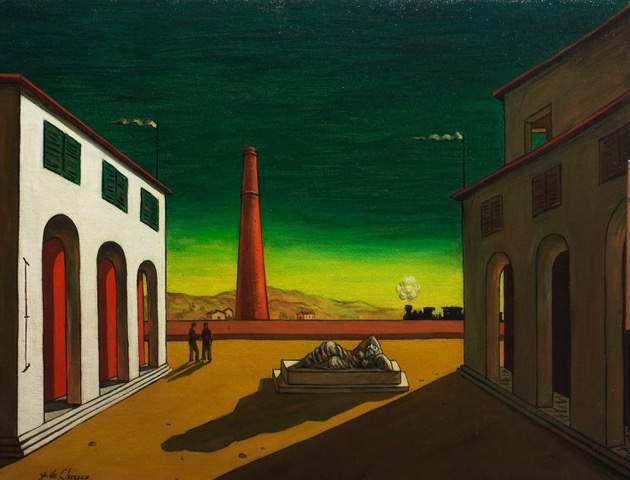De Chirico and De Pisis (and the Neapolitan seventeenth century) dialogue in Domodossola
Scheduled at the Musei Civici di Palazzo San Francesco in Domodossola, from July 15 to October 31, 2018, is the exhibition De Chirico | De Pisis. The Mind Elsewhere: this is an exhibition that marks an important and fundamental step for the Piedmontese city, for several reasons. First, because for the first time the two artists who are the protagonists of the exhibition, Giorgio De Chirico (Volos, 1888 - Rome, 1978) and Filippo De Pisis (Ferrara, 1896 - Brugherio, 1956), are confronted with the still lifes of the Neapolitan seventeenth century, with which their paintings show similarities. Second, because there is a discovery concerning De Chirico’s still life known as La vita silente, on display in the exhibition: a self-portrait of the artist was in fact found on the back, along with some inscriptions that inform us about the stages of preparation of the canvas. Again, the curatorship of the exhibition was entrusted to the recently appointed curator of the Art Collections of the Municipality of Domodossola (and this is the first time that the municipality of Domodossola has a curator for municipal collections), Antonio D’Amico. Finally, the exhibition is important because through this show the municipality is beginning the work of refitting the upper floors of Palazzo San Francesco, which will be open by the end of 2019, to return to public use the intriguing and varied collections that have been lying in storage for more than 30 years.
The exhibition itinerary, set up in an unprecedented metaphysical setting that puts an original armchair painted by De Pisis in dialogue with furnishings from the collections of Palazzo Silva in Domodossola, intends to recreate the suspended and evocative atmospheres of the paintings of De Chirico and De Pisis: there are forty works on display, from private Italian and foreign collections, created by both artists throughout their careers. The exhibition will feature canvases depicting the usual themes of De Chirico and De Pisis’ repertoire: still lifes, city views, in which one can sometimes glimpse small or large figures living in the silence of space, and portraits, in which the two artists communicate a very personal perception of time, understood as an eternal present, and look at the reality that surrounds them with an intimate and psychological gaze, discovering that everything possesses a soul and a precise story to show.
As for the comparisons with still lifes from the Neapolitan seventeenth century (by artists such as Giovanni Battista and Giuseppe Recco and Giovanni Battista Ruoppolo), they are important for understanding one of De Pisis’s sources of inspiration, and also for discovering how ancient painting had fascinated De Chirico (who in 1929, after a visit to the Prado in Madrid, declared, writing to Cornelia Silbermann, “the sight of ancient painting, the works of past geniuses has exalted me again”).
The exhibition opens on Wednesdays and Thursdays from 10 a.m. to 2 p.m., Fridays and Sundays from 10 a.m. to noon and 4 p.m. to 7 p.m., Saturdays from 10 a.m. to 2 p.m. and 5 p.m. to 9 p.m. Tickets: 5 euros full, 3 euros reduced (for Domodossola residents, over 65s, disabled, students of cultural heritage and Academies of Fine Arts), 4 euros reduced conventioned, 2 euros reduced schools. Provided 6 euro cumulative ticket (which also allows entrance to the Domodossola Civic Museums) and family ticket (10 euro, allows free entrance for children). Free for children under 5, AMO cardholders, guides, interpreters and tour leaders. The exhibition catalog is published by Silvana Editoriale.
Image: Giorgio De Chirico, Piazza d’Italia (1952, oil on canvas, Private collection, courtesy Galleria Salamon)
 |
| De Chirico and De Pisis (and the Neapolitan seventeenth century) dialogue in Domodossola |
Warning: the translation into English of the original Italian article was created using automatic tools. We undertake to review all articles, but we do not guarantee the total absence of inaccuracies in the translation due to the program. You can find the original by clicking on the ITA button. If you find any mistake,please contact us.



























